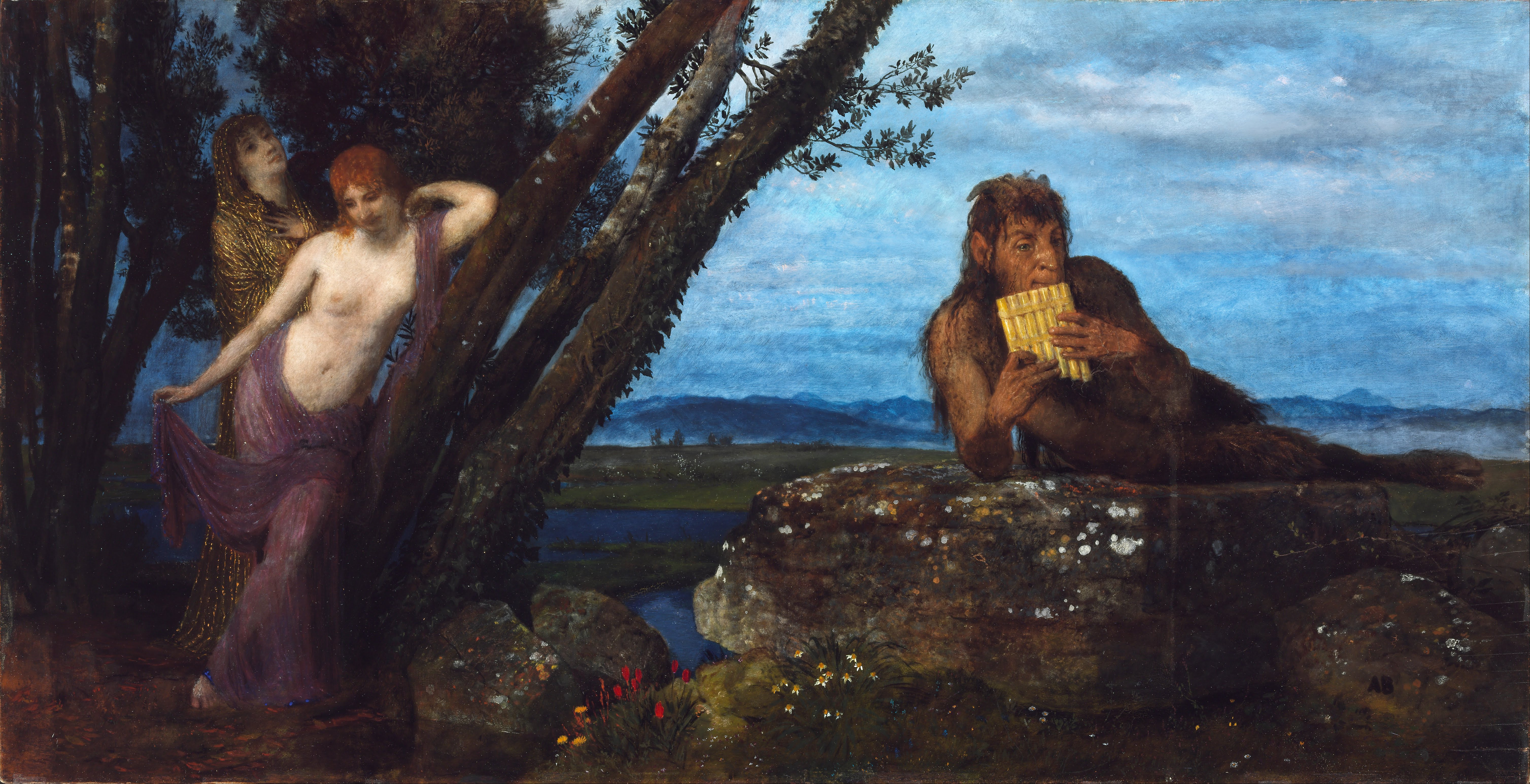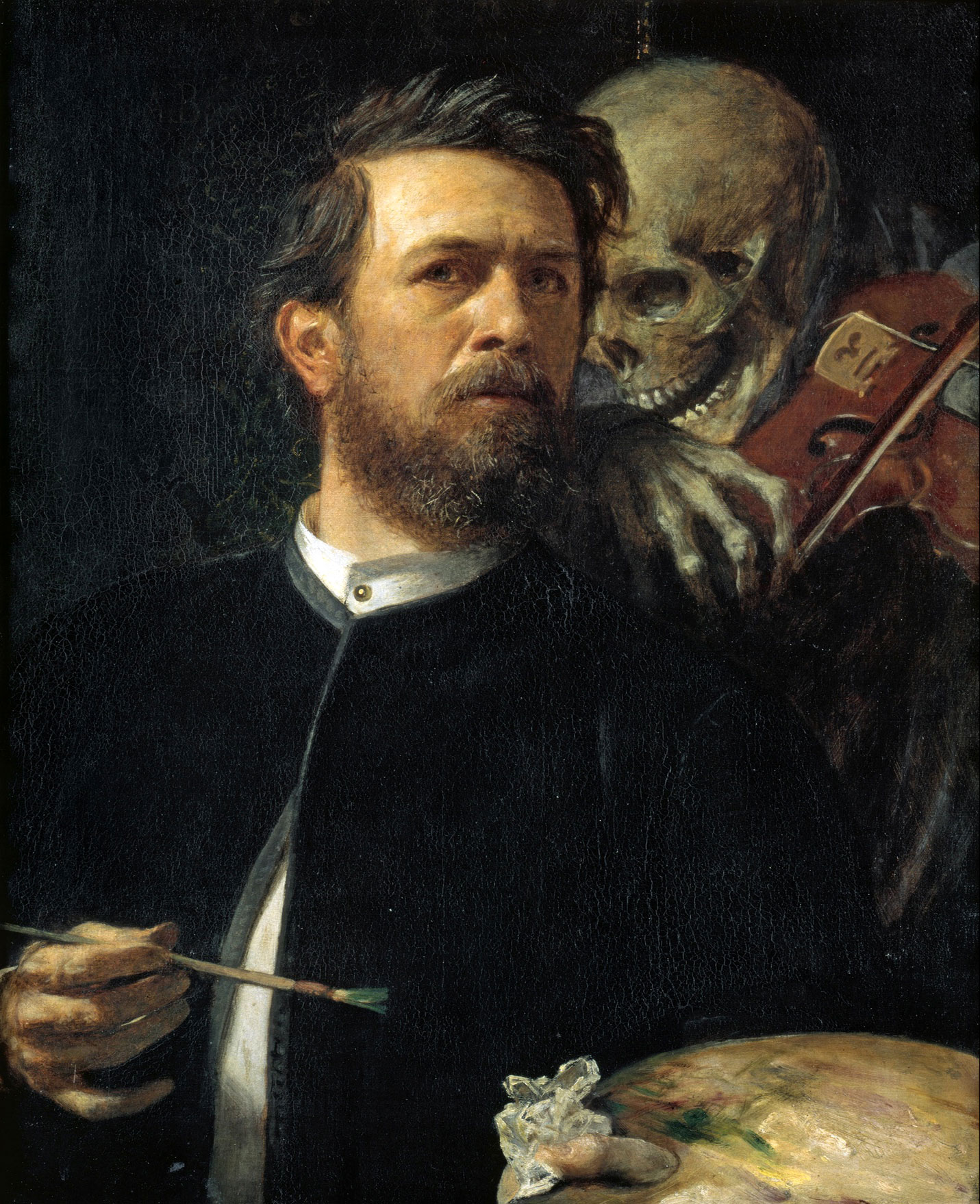Influenced by Romanticism, Arnold Böcklin's Symbolist paintings tackle mythological subjects often overlapping with the Pre-Raphaelites. His pictures portray mythological, fantastical figures alongside classical architectural constructions creating a strange fantasy world (and often revealing an obsession with death). Clement Greenberg wrote in 1947 that Böcklin's work "is one of the most consummate expressions of all that is now disliked about the latter half of the nineteenth century."
From 1874 Böcklin lived in Florence. There he met Hans von Marées with whom he travelled to southern Italy in 1879. In the same year, Böcklin painted Spring Evening, a composition of elegiac atmosphere. In this slightly earlier version and closest in its details to the Budapest version which has since disappeared, Pan plays a transverse flute. In another somewhat more static picture painted a year later and now in the Kunsthaus, Zürich, the composition is reversed. In the 1890s, Böcklin revived the idea of the scene with Pan playing to woodland nymphs in three versions, all similar to one another but significantly different from the earlier ones.




Spring Evening
oil on canvas • 67.4 x 129.5 cm
 Arnold Böcklin
Arnold Böcklin